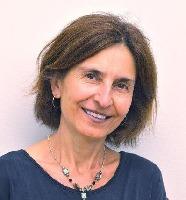Oya Y. Rieger is Senior Advisor at Ithaka S+R, based in New York
As an organization that provides research and consultancy services to the global higher education community to support the creation, discovery, dissemination, and preservation of scholarship, Ithaka S+R is interested in exploring the current landscape of digital preservation programs and services in order to identify research questions that will contribute to the advancement of strategies in support of future scholarship. To this end, we recently published a brief, The State of Digital Preservation in 2018: A Snapshot of Challenges and Gaps, which is based on interviews with 21 experts and thought leaders to survey their perspectives on the state of digital preservation. The digital preservation community now represents deeper expertise involving a robust exchange of best practices, standards, preservation techniques, tools, and systems. Nevertheless, given the complexity of designing preservation strategies at scale, it is inevitable that there is lingering anxiety.
When organizations such as the Inter-university Consortium for Political and Social Research (ICPSR) started archiving data in the early 1960s, their primary responsibilities were creating backup copies and capturing sufficient metadata and documentation.[1] With the advancement of technologies, the scope of preservation activities have broadened significantly in order to manage a range of vulnerabilities and threats spanning from technical malfunctions to media obsolescence, organizational failures to copyright restrictions. The notions of ownership and control are central to preservation practices. The scholarly record and the primary sources necessary to inform tomorrow’s scholarship are getting increasingly more distributed, entailing a wide range of discovery, access, and use arrangements. The ubiquity and variability of our digital heritage raises a range of questions about the current role of research libraries and archives, which historically have assumed a stewardship role to ensure the discovery and access to primary resources and cultural heritage materials over the generations of users. With the increasing influence of commercial participants and the broadening diversity of preservation community, their distinctive mission is becoming more opaque. What are the complementary roles and responsibilities of the key stakeholders such as research libraries, archives, preservation service providers, publishers, scholarly societies, federal agencies, funders, and other content creators and distributors in ensuring long-term access for future use?
One of cornerstones of preservation is maintaining the context to sustain the interactions amongst the elements of a wider digital environment. It is increasingly difficult to isolate the user experience without taking into consideration various contextual issues such as the software required to make sense of preserved data or an application needed to experience a new media art work. The key to digital preservation is sustaining interactivity and variability to support future uses beyond privileging the core archival principles such as authenticity, fixity, and integrity. Digital preservation has always been about access and ensuring the content is usable. So as we envision what preservation at scale entails in this digital age, one of the open questions is imagining tomorrow’s users and their information seeking and use behavior. As the library community is experimenting with the shared storage strategies to collectively address the longevity of print collections, there is some urgency to start tackling the challenges involved in preserving a range of born-digital materials including blogs, wikis, AV, and software in a similar cohesive manner.
The brief highlights some assessment- and metric-related matters as it is becoming more complicated to articulate what success entails in digital preservation. Under the rubric of digital scholarship, we are witnessing a range of practices that leverage technologies and digital content to advance learning, teaching, research, and creative expression. One of the areas highlighted in the report is the difficulty in preserving the outcomes, methodologies, and context of such engagements. Alexis Madrigal in an Atlantic article speculates how future historians will understand the current internet.[2] We can experience how WordPerfect functioned through techniques such as emulation. However, how do we preserve the experience of using the Twitter or Pinterest?
As we celebrate the World Preservation Day, we look forward to hearing your reactions to the brief to help us carve out a research agenda through the wisdom of the community.
[1] Janet V. Vavra. “Confronting Obsolescence: An Archival Lifestyle,” in Moving Theory into Practice: Digital Imaging for Libraries and Archives, ed. Anne R. Kenney and Oya Y. Rieger (Ithaca, N.Y.: Cornell University Library, 2000), 138-139.
[2] Alexis C. Madrigal. “Future Historians Probably Won't Understand Our Internet, and That's Okay,” The Atlantic, December 6, 2017, https://www.theatlantic.com/technology/archive/2017/12/it-might-be-impossible-for-future-historians-to-understand-our-internet/547463/
